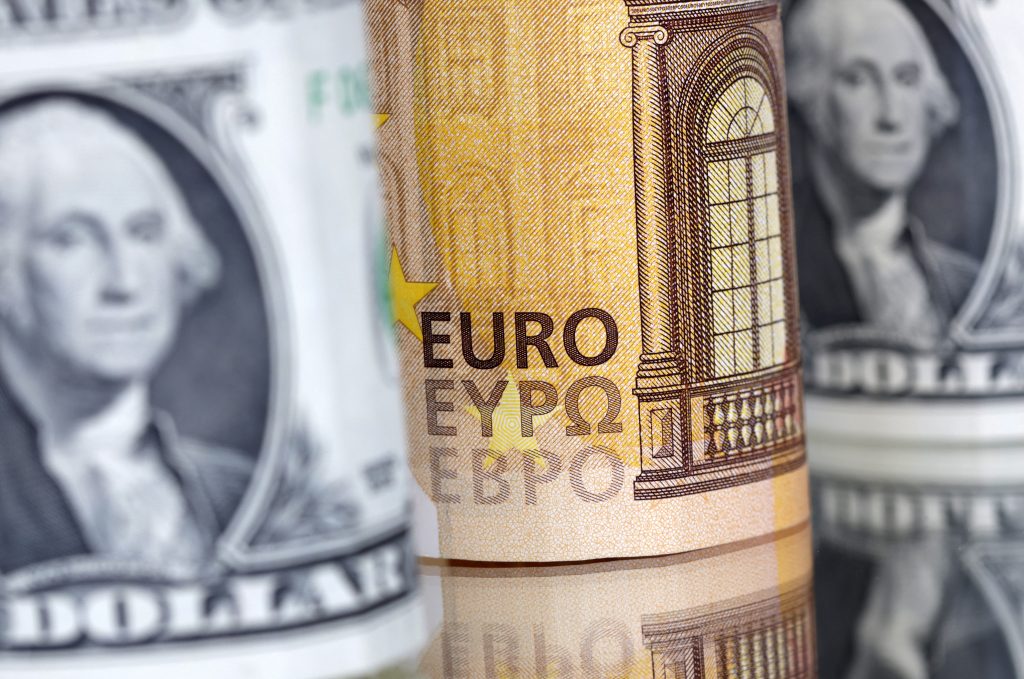(Reuters) – The safe-haven dollar rose on Monday against the euro and sterling as military clashes between Israel and the Palestinian Islamist group Hamas raised concerns the conflict could widen beyond Gaza.
Israel’s response to the unprecedented multi-pronged attack by Palestinian gunmen from the Gaza Strip will “change the Middle East,” Prime Minister Benjamin Netanyahu said on Monday.
Risk sentiment was fragile as Israel said it had called up an unprecedented 300,000 reservists and warned residents of parts of the Gaza Strip to leave, in the latest signs it could be planning a ground assault to defeat Hamas.
“I’m still not convinced that the geopolitics is going to drive the markets,” said Marc Chandler, chief market strategist at Bannockburn Global Forex in New York.
“We don’t know yet, but as long as the war is just between Israel and Hamas in the Gaza … that it’s not a broader war, as long as it’s contained, then I think that we can go back and focus on the economic fundamentals,” he said.
The Israeli shekel traded 2.84% lower at 3.9470 per dollar after the Bank of Israel announced it would sell up to $30 billion of foreign currency in the open market to maintain stability. Earlier, the shekel tumbled more than 3% to an almost eight-year low of 3.9880 per dollar.
The dollar index, a measure of the U.S. currency against six others, rose 0.047%, while the euro fell 0.35% to $1.0549.
The Japanese yen – another traditional safe-haven currency – edged 0.28% higher to 148.89 per dollar. Japan was closed for a holiday.
Sterling fell 0.19% to 1.2209 against the U.S. dollar.
“If a war breaks out anywhere in the world it is a good idea to hold U.S. dollars. It can therefore come as no surprise that the greenback started trade last night with some gains,” said Ulrich Leuchtmann, Head of FX and Commodity Research at Commerzbank (ETR:CBKG).
The dollar also drew support from Friday’s data showing U.S. employment increased by the most in eight months in September, potentially setting up for a higher-than-expected inflation print on Thursday.
Net long positions on the dollar rose to a one-year high, according to U.S. Commodity Futures Trading Commission data released on Friday.
The value of the net long dollar position was $10.55 billion for the week ended Oct. 6.
But investors aren’t expecting another hike from the Federal Reserve in November, according to CME Group (NASDAQ:CME) data. Futures are pricing an 85% probability that Fed policymakers keep rates on hold at its November policy meeting.
“The key debate is whether the U.S. dollar’s inverse relationship with risk appetite will become more pronounced again. Its inability to capitalize on healthy U.S. labor market data brings that thinking to the fore,” said Paul Mackel, global head of FX research at HSBC.
The dollar index, which measures the greenback against six peers, posted its first weekly decline on Friday after 11 consecutive weeks of gains.
Rekindling recession fears in the euro zone, data showed on Monday that German industrial production fell slightly more than expected in August, by 0.2% compared to the previous month.
In Asia, China’s yuan held firm against the dollar on the first trading day after Golden Week holiday, underpinned by a stronger-than-expected official guidance fix.
The offshore yuan fell 0.18% to 7.2964 per dollar.



